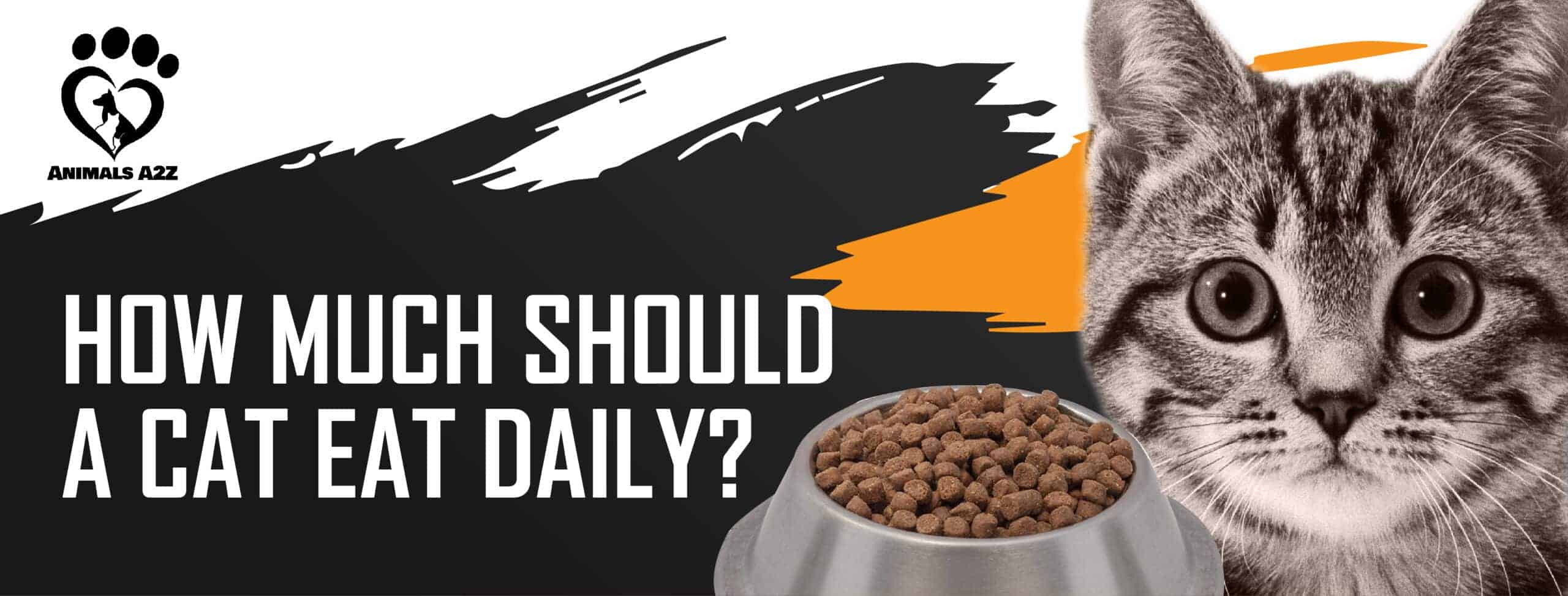Feeding your cat the right amount of food is essential to keep your furry companion happy and healthy. There are a variety of factors that go into how much is the right amount including, age, size, feeding time, metabolism, exercise, and even the environment around you. To learn more about it, here are the answers to some of the most common questions related to feeding your cat.
Table of Contents
How to figure out how much your cat should eat daily
When figuring out how much your cat should eat, it’s important to know that cats are “true” carnivores, this means they have a high protein requirement. To determine how much you should feed your cat you need to decide what kind of diet you want to feed them.
Are you gonna give your cat dry food, wet food, or a combination.
What if your cat is sick? Read this: How to get sick cat to eat
Dry food
Dry Food is very convenient, it’s easy to store and arguably less expensive than wet food. Feeding your cat a dry food diet is fine as long as you choose a brand that is high in protein with balanced nutrients. Refrain from purchasing low-quality dry food — get the type that contains more carbohydrates from grains. Some dry food brands contain plant-based protein instead of animal protein, which is not ideal for your little carnivore. When choosing the kibble, make sure to check that the carbohydrates are 10% of the ingredients. A trick would be to check the first ingredient in the list, the first item mentioned is usually what makes up most of the kibble.
According to professional opinion, a typical 5 pound (2.3kg) adult cat requires ¼ cup (30g) – ⅓ cup (40g) of dry food per day depending on their lifestyle. Now all you need to do is, measure out that day’s ration depending on how often you have decided to feed your cat. You can also check the feeding guide on the food package for more details.
Wet Food:
Wet food helps increase your cat’s water intake, thus increasing overall hydration. A hydrated cat is less likely to have urinary tract problems, kidney disease, or diabetes. Although most owners see wet food as a treat, you can also serve it daily as a sustainable source of water and nutrition for your feline friend. The downside is, you can’t leave wet food out for more than an hour or it will be spoiled while dry kibble can be left out all day.
You can check the can’s label for feeding recommendations, but generally, a typical 5 pound (2.3kg) adult cat requires ⅝ cup (70g) to ½ cup (60g) of wet food per day. Active cats will need more calories than less active cats, adjust their food portion depending on their lifestyle.
Wet food contains fewer calories than dry food, therefore makes it easier for your cat to maintain healthy body weight.
Mixed Feeding:
Both wet food and dry food have their pros. If you mixing them, your pet will be able to experience a variety of flavor while maximizing its health benefits. Wet food keeps your cat hydrated while dry food is a convenient yet concentrated energy source.
You can start mix feeding your cat by adding in the wet food to their routine as a treat. If your cat seems reluctant to try it, place a serving on a small plate then microwave it for about 5 seconds.
Heating up the food enhances the smell enticing the cat to try a serving. Serve it warm, not hot, to prevent burning your kitty’s tongue.
Another tip is to choose a wet food that compliments your cat’s dry kibble by choosing a protein that they have gotten used to. For example, the kibble’s main ingredient is chicken, choose a wet food with chicken as the main protein ingredient as well.
For a typical 5 pound (2.3kg) adult cat, mix 0.05 cup (12g) – ⅛ cup(17g) of dry food with ¾ cup (90g) – 1 cup (110g) of wet food per meal twice a day. It is important to figure out the right portions to ensure you are not overfeeding.
The brand and quality of food matters, regardless of it being wet or dry. High-quality pet food is always recommended. If your pet is suffering from an existing health problem, always ask for your veterinarian’s advice on what kind of diet they should be on and how often they should be fed.
Video: How Much Should You Feed Your Cat?
[crp]
There are a lot of possibilities as to why your cat is always hungry. They could simply be bored or it could also be a sign of psychological or physical health problems. It’s important to keep in mind that a cat’s stomach is small if he is eating more than he needs and you have noticed a change in his behavior contact or visit your veterinarian for a check-up.
Having a schedule of when you provide food for your cat helps you monitor their food intake more closely, and it will allow your cat’s body to prepare for the food it will receive. In addition, cats are creatures of habit. A schedule will serve as a constant coping tool whenever there are changes in the household.
If you’re bringing a new cat or kitten home, we recommend following her previous feeding schedule. New surroundings can be very stressful for a cat. While they’re getting used to everything, following their previous schedule will help ease the transition and prevent intestinal upset. Once your new cat is more comfortable, slowly introduce the new feeding schedule.
The stomach structure of cats is simple; a filled stomach will empty itself after a few hours of digestion and the food will slowly work its way towards the small intestine. After at least 8 hours of being empty, the stomach will send a signal to the brain activating the “hunger stimulus”.
Adult cats aged 6 months and above are recommended to have at least two meals a day, 12 hours apart. If a cat is left unfed for more than 12 hours, their stomach can become hyper acidic leaving your cat feeling ill or nauseated.
For kittens aged 6 months and below, they require more nutrition to support their growth. It is recommended to feed them at least 3 to 4 times a day.
Conclusion
Cats need a balanced diet to stay healthy and happy. To ensure your four-legged friends get all the nutrients they need invest in good quality wet and/or dry food at a regular schedule. If you have more questions, consulting your vet is always a good choice.


